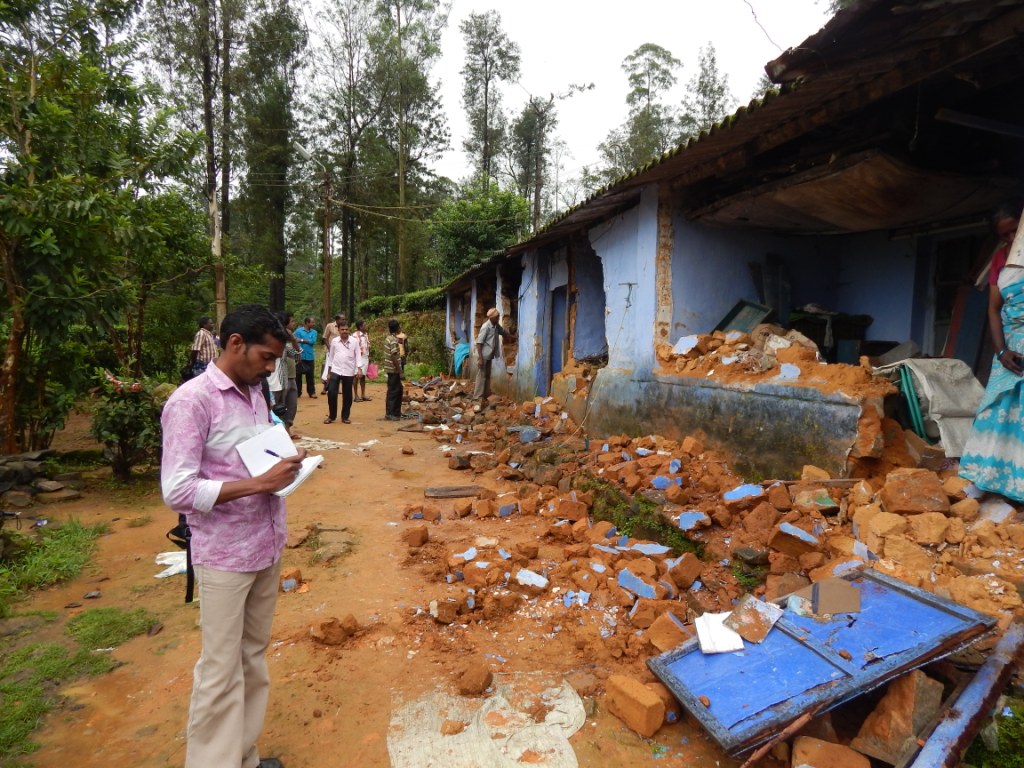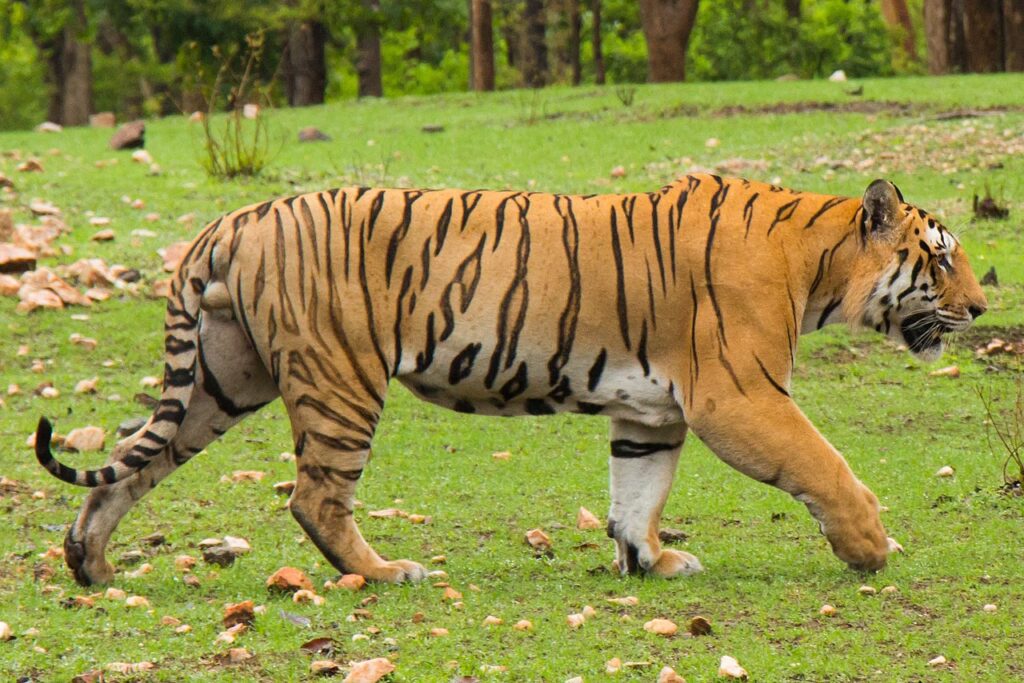Compentation schemes are commonly used human-wildlife conflict (HWC) mitigation strategy used across the globe. These schemes provide economic reimburshments to victims of HWC. These compensation schemes cover crop damage, livestock predation, human injury and/or death.
As discussed earlier, victims of HWC are likely to retaliate and harm wildlife. The compensation schemes hope to pacify the desire for revenge. India’s first compensation schemes originated from the Project Tiger in 1973.

Are compensation schemes actually effective?
However, it is appalling to know how flawed the compensation systems. While the central government encourages such scheme, there is still no uniformed compensation strategy. The decentralization of administrative powers have left the intricacies to the heavily under-resourced state Forest Department. The rational behind this is to produce a simple system with less bureaucratic approval. However, nothing could be further from this.
Also a blanket policy will not be able to cater specifically to the wildlife conflict of a particular region, without causing a lack of clarity. Only 26 of India’s 29 FD have compensation schemes for carnivore related conflict. Comparitvely, only a mere 22 have policies for crop damage.
Villagers face massive delays!
While the compensation schemes are in place in most states, the effeciency of such policies has been frequently questions. An example of this is a study of the 1371 bordering villages in the five tiger reserves in the Western Ghats. The study found that only 31% of the compensation claims were actually paid off. This phenomena was also noticed in Rajaji National Park. Here only 57.2% of the compensation claims were actually paid off.
Furthermorem there is an immense delay in the processing of these claims. In Bandipur and Nagarhole National Park, the average time taken to receive compensation was 294 days. Given the horrid rate of compensation provision, the meagerness of the compensation should not be a surprise.
Compensation Schemes are only for India’s Charismatic Megafauna

India’s inordinate focus on the conservation of flamboyant species is to blame for this phenomena. HWC policies and solutions have excessively revolved around tigers and elephants. Smaller and common species, such as antelopes, monkeys and wild boar, are regularly ignored. It is despite this that tigers, like Avni, are still shot due to conflict with humans.
In numerous states, the compensation policies do not include compensation for crop los by common herbivores such as antelope, monkey and deer. A study showed that nilgai, were the main crop raiders in the villages around Sariska Tiger Reserve. Despite this, the Rajasthan government does not provide compensation for crop damage by Nilgai. In Rajaji National Park, 44.4% of the respondents had claimed that Wild Boars were the most problematic species after elephants. Despite this, most states, do not consider providing compensation for crop damage by Wild Boar.
What counts as wildlife?
Obviously larger mammals, such as elephants, rhinos and tigers, do indeed cause significant collateral damage in human habitation, these interactions are less frequent than the more common species. There is a notably higher frequency of crop invasion by these common species, which eventually will cause more economic damage to farmers in the long run.The exclusion of various smaller species is largely due to vague use of the term “wildlife” while referring to HWC.
In various government notifications, the definition of wildlife is in occurrence with Wildlife Protection Act 1972. Under Section 2(36) of this act, the term “wildlife” refers to any animal found in nature which has been classified under Schedule I to IV. However, there is a lack of linkage between policy and law. This allows for varied interpretation of the definition by different governmental stakeholders, which hence can prove controversial. Vidhya Legal Policy, an NGO which conducts research into India’s various laws and policies, recommends for the clear definition of the term “wildlife” and its reiteration in all of the nation’s compensation schemes.
What is includes in compensation schemes?
There is also a lack of standardised compensation criteria. For example, the Karnataka government has five categories for damage – crops, livestock, injury, death and property death. There categories are used to make recommendations on compensation amounts. No standard criteria to calculate compensation requirements based on age, health and type of crop and livestock. The gender of the latter also requires a separate criteria, as female livestock usually also provide milk.
Meanwhile a scheme does exist in Chandigarh, although it again lacks comprehension. The respective governments have fixed rates for damage to various types of crop as follows; Rs 6,800, 13,500 and 18,000 per hectare for rain fed, irrigated and pernnelial crops respectively. While this system is clearly more effective than that of Karnataka, it is still fairly broad given the cost variance of individual species of crops.
How is compensation valued?
While it has been established that compensation schemes are grossly undervalued, it also should be noted that such schemes can never truly be of an accurate value. Monetary schemes are not able to compensate for the loss or injury of a family member. This problem is aggravated when the victim is the primary breadearner of the family, which could damage future income and livelihood. Additionally, monetary schemes can neer precisely compensate for the time lost due to the demolition of crops.
Hihgly impractical qualification requirments for compensation schemes are also proving to be a hindirance for the local population. For example, in Chandigarh, compensation is also provided to farmers if 33% of their agricultural lands has suffered crop damage. This requirement is unjustifiable, considering the fact that crop damage below this figure is highly common.
Lack of Accessibility also a Major Issue
The schemes also do not account for the lack of accessibility of remote village and the high travelling cost, which is a massive discouragement for locals willing to apply for compensation. This is evident in the compensation schemes of Mdhya Pradesh, which insists on a 24 hour time frame for reporting crop loss to the revenue deparment of the FD. This time frame is harsh for those in remote areas, with a lack of a developed transportation network
In Kuno Wildlife Sanctuary, only one of the four surveyed villages had a well-maintained tar road. This village, was unsurprisingly where the FD office was based. The other three villages only had mud roads in horrendous conditions, significantly increasing travel time. It must be noted that, especially during the harvest season, such inflated travel times are not economically feasible.
Accesiblity related issues also are proving to be an hindirance for compensation for livestock injury and death. The policy requires written certification by vetenarians following a proper diagnosis of the livestock. However, there is evident reluctance shown by vetnerians in traveling to such remote areas for livestock diagnosis. Furthermore, the fees of such diagnosis, although eventually reimburshed by the FD, can prove to be too costly for locals to pay upfront. Can humans and wildlife truly coexist like this?
A Severe Lack of Awareness around Compensation Schemes
For the compensation schemes to truly succeed, there has to be an active participation of the locals affected. However, a lack of knowledge of such schemes is preventing such participation. In the survey conducted in the villages of Rajaji National Park, 15% of the respondents claimed they did not know about the eligibility of the scheme or how to apply. Meanwhile, a study in Kuno Wildlife Sanctuary conveyed that the majority of the Adivasi (SC/ST groups) were completely oblivious to such schemes. This is despite numerous intiatives at a local scale to better coordinate conservation measures between locals and the government.
The failure of such awareness initiatives by the government lie in their insistence on the use of pamphlets and written media, which are rendered useless by the largely uneducated, and often illiterate, forest dwelling population. Low education levels prevent locals from understanding the prerequistes of the compensation schemes, hence causing a rejection of their application. Furthermore, the lack of education, results in locals facing immense corruption during the application process.
There have been cases, in the above mentioned studies, where backdated, incomplete or inaccurate checks have been provided as compensation to the naïve locals, who are not able to decipher such. There is also no written proof of claims are provided, which is often used as an excuse by officials to avoid carrying out compensation.
Wild Seve
Fortunately, numerous attempts have been made, with high success, to increase the effectiveness of compensation schemes using technology. The Centre of Wildlife Studies in Bangalore as produced an Android Software by the name “Wild Seve” which helps locals report negative animal interactions, and thus increasing the compensation received by them.
The software utilizes a combination of the Open Data Kit (ODK) platform and the R statistical software to collect the required data of HWC and process compensation payments efficiently. The digitization of the process has certainly increased transparency and reduced logistical hurdles for the locals. As the project was based in and around Nagarhole and Bandipur National Parks, the entirety of the software is in Kannada, hence making usage easier for locals.
The success of the “Wild Seve” application is evident. 5,685 people living in bordering regions of Nagarhole and Bandipur NP have received 1.62 crore rupees in compensation since the inauguration of this project in July 2015. These statistics and efficiently were unimaginable in the past, according to a local (name disclosed) of Kundekere Village near Bandipur claimed that such cooperation with FD was unimaginable before the launch of this project. This another example of how technology has come to help conserve wildlife.
Conclusions
As wildlife recovers, India has to find ecological solutions to prevent human wildlife conflict. Habitat fragmentation is a major cause of conflict. It is crucial to protect wildlife corridors if wildlife conflict wants to be minimized. This is particularly the case with tigers, whose population have more than doubled in the last 10 years.
Help us Help Them! Think Wildlife Foundation is a non profit organization with various conservation initiatives. Our most prominent campaign is our Caring for Pari intiative. Pari is a rehabilitated elephant at the Wildlife SoS Hospital. 25% of the profits from our store are donated to the elephant hospital for Pari. Other than buying our wonderful merchandise, you could donate directly to our Caring For Pari fundraiser.
